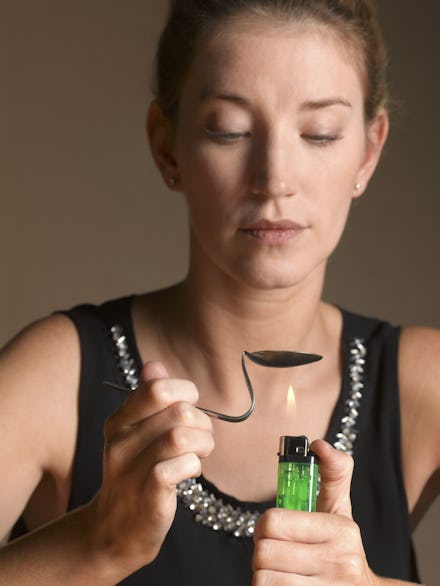The 6 Stats You Need to Know to Understand America's Heroin Epidemic

Opioids. Everyone's talking about them.
In recent months, the family of drugs — which includes heroin and prescription painkillers like oxycodone — has become a fixture in the country's collective consciousness. Last month, President Barack Obama pledged $1.1 billion in funding to fight Americans' abuse of heroin and prescription opioid painkillers.
This year's Super Bowl, viewed by more than 110 million people, even featured an ad for medication to fight opioid-induced constipation — suggesting the drugs are nearly as commonplace in our culture as Coca-Cola, Doritos and big trucks driving through mud.
And on Tuesday, the Centers for Disease Control and Prevention released official 2016 guidelines for prescribing opioids — namely, that doctors should avoid doing it.
"More than 40 Americans die each day from prescription opioid overdoses," CDC Director Tom Frieden said in a statement. "We must act now. Overprescribing opioids — largely for chronic pain — is a key driver of America's drug-overdose epidemic. The guideline will give physicians and patients the information they need to make more informed decisions about treatment."
Of course, some folks depend on opioids to manage their chronic pain, and use them responsibly. Still, there's no question America has a problem with heroin and prescription opioid painkillers. These statistics show just how serious the problem has become.
1. The U.S. makes up only 4.6% of the world's population — but we consume 80% of the world's opioids, according to ABC News.
Americans also consume 99% of the world's hydrocodone.
"There is ... this national problem we have, which is that there's a pill for every ill," Dr. Ruth Potee, a Massachusetts family physician and the Opioid Task Force's medical advisor, told Mic after the opioid-related Super Bowl ad aired.
"Are we really in more pain in this country?" Potee asked. "Really, we're not. We haven't evolved to be more pained. Our strategies of managing people's pain are so limited."
2. Opioid prescriptions per capita increased 7.3% from 2007 to 2012, according to the CDC's 2016 guidelines for prescribing opioids.
In 2012, medical providers wrote 259 million prescriptions for opioid painkillers — nearly a bottle for every person in the country.
3. An increasing number of people are trying heroin for the first time, according to a report by Heroin.net.
In 2002, 117,000 people tried heroin for the first time. In 2014, that number was 212,000 — an 81% increase. That means an average of 600 people tried heroin for the first time each day, Heroin.net found.
4. Heroin-related overdose deaths increased by 286% from 2002 to 2013, according to the CDC, with more than 8,200 people dying in 2013.
5. Heroin use among 18- to 25-year-olds has more than doubled between the periods of 2002 to 2004 and 2011 to 2013, according to the CDC.
Rates of people who used heroin went from 3.5 per 1,000 people in 2002-2004 to 7.3 per 1,000 people in 2011-2013 — an increase of 109%.
6. Law enforcement is seizing more and more heroin each year, according to the Heroin.net report.
Heroin seizures increased 81.5% from 2010 to 2014. The average size of each heroin seizure has been increasing, too — from from 0.86 kilograms in 2010 to 1.74 kilograms in 2014.
"This abundance of heroin across the country can, of course, mean only one thing: an abundance of people using it," the report said.